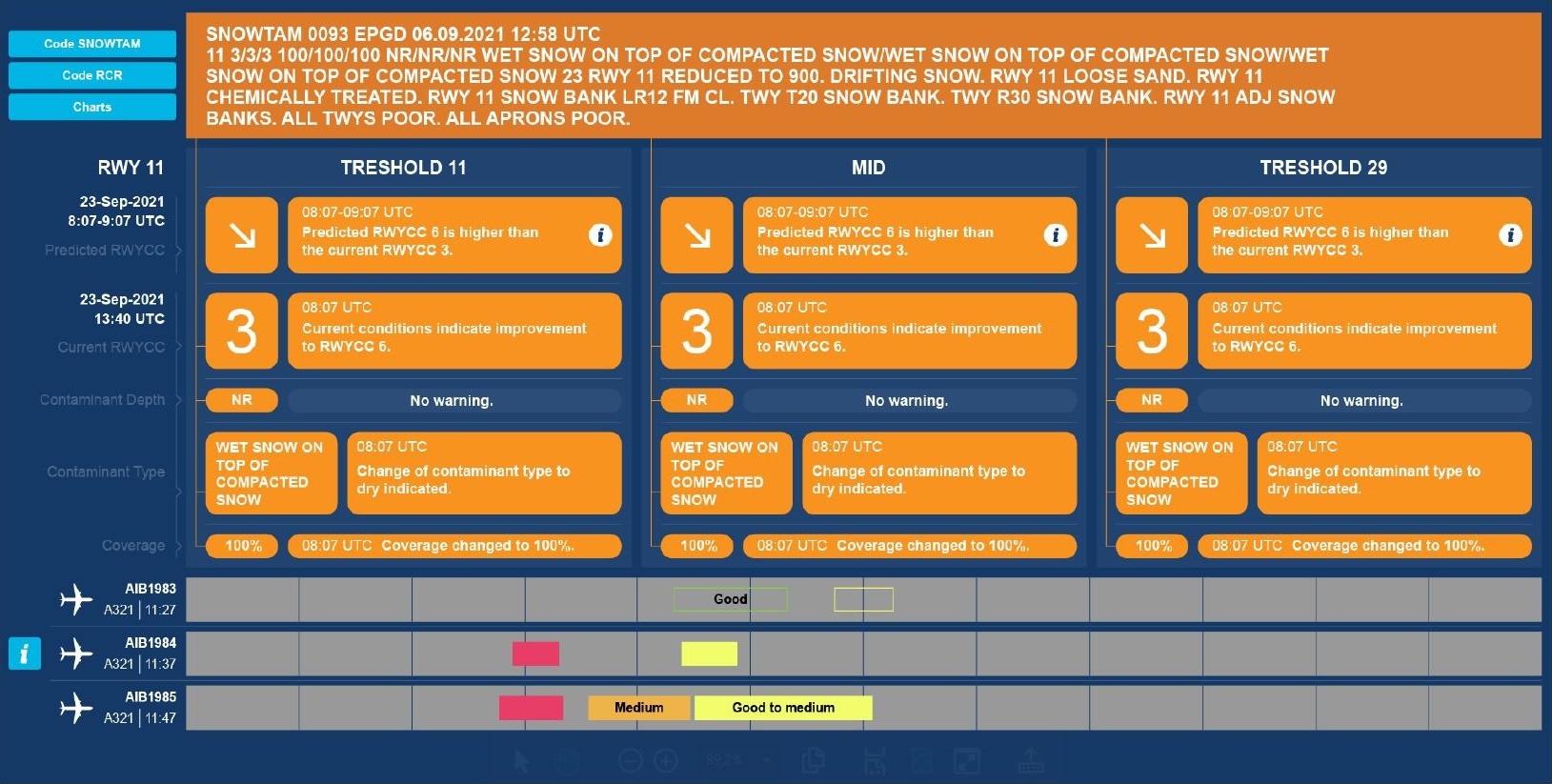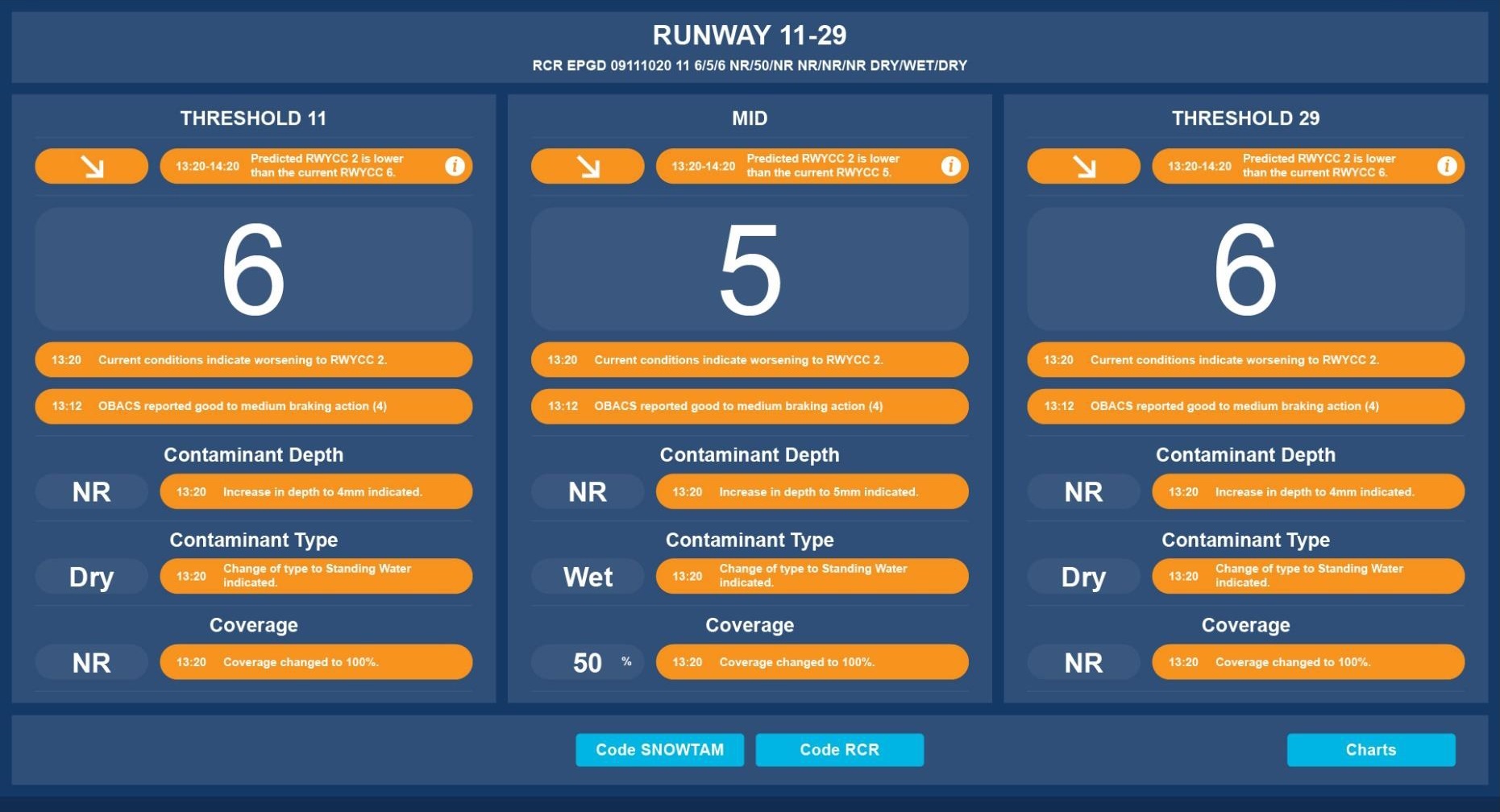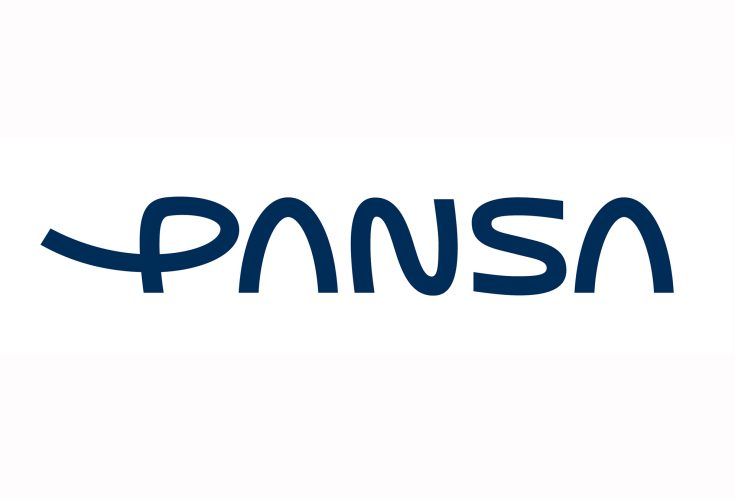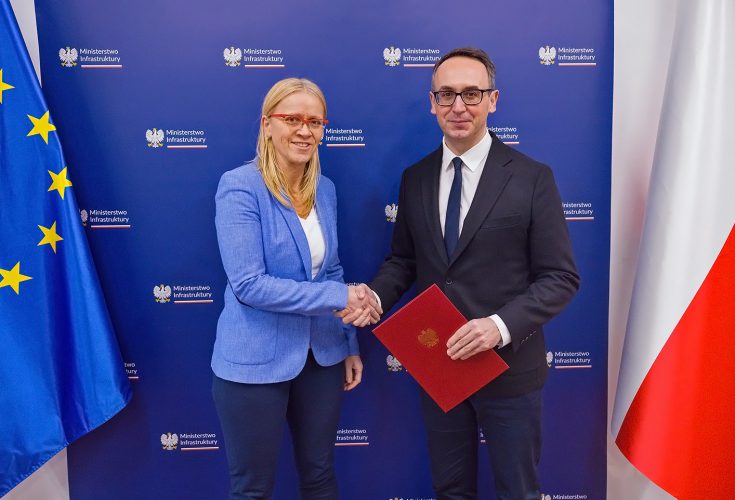Runway excursions during take-off or landing are amongst the most common incidents that still occur in civil aviation. In order to address this issue RCAMS (Runway Condition Awareness and Monitoring System) is being developed jointly by Polish Air Navigation Services Agency, Interdisciplinary Centre for Mathematical and Computer Modelling of the University of Warsaw (UW ICM) and MicroStep-MIS in cooperation with Airbus and Dassault. The purpose of the system is to continuously monitor and report runway condition – friction, temperature and water or snow coverage. The first tests of the new system kicked off in early December at Gdańsk Airport.
According to International Civil Aviation Organisation (ICAO) the occurrence of runway excursions has not decreases in the past 20 years and the International Air Transport Association (IATA) estimates that currently one in four runway safety incidents is related to aircraft veering off or overrunning the runway.
RCAMS is a runway monitoring system that aims to help improve the assessment of runway condition, provide information about the contamination on the runway and facilitate exchange of such information between airport duty officers, air traffic controllers and pilots.
RCAMS is a ground-based, digital solution supporting the airport duty officer in assessing the runway condition. The system consists of sensors built into the runway and special software capable of obtaining information from additional sources, such as meteorological data, surveillance data, or data from the On-board Braking Action Computation System (OBACS) developed by Airbus and Dassault. RCAMS does not only provide the duty officers with relevant information, but also supports them in creating the RCR (Runway Condition Report), i.e., regular reports of the runway condition, which is then included in NOTAMs.
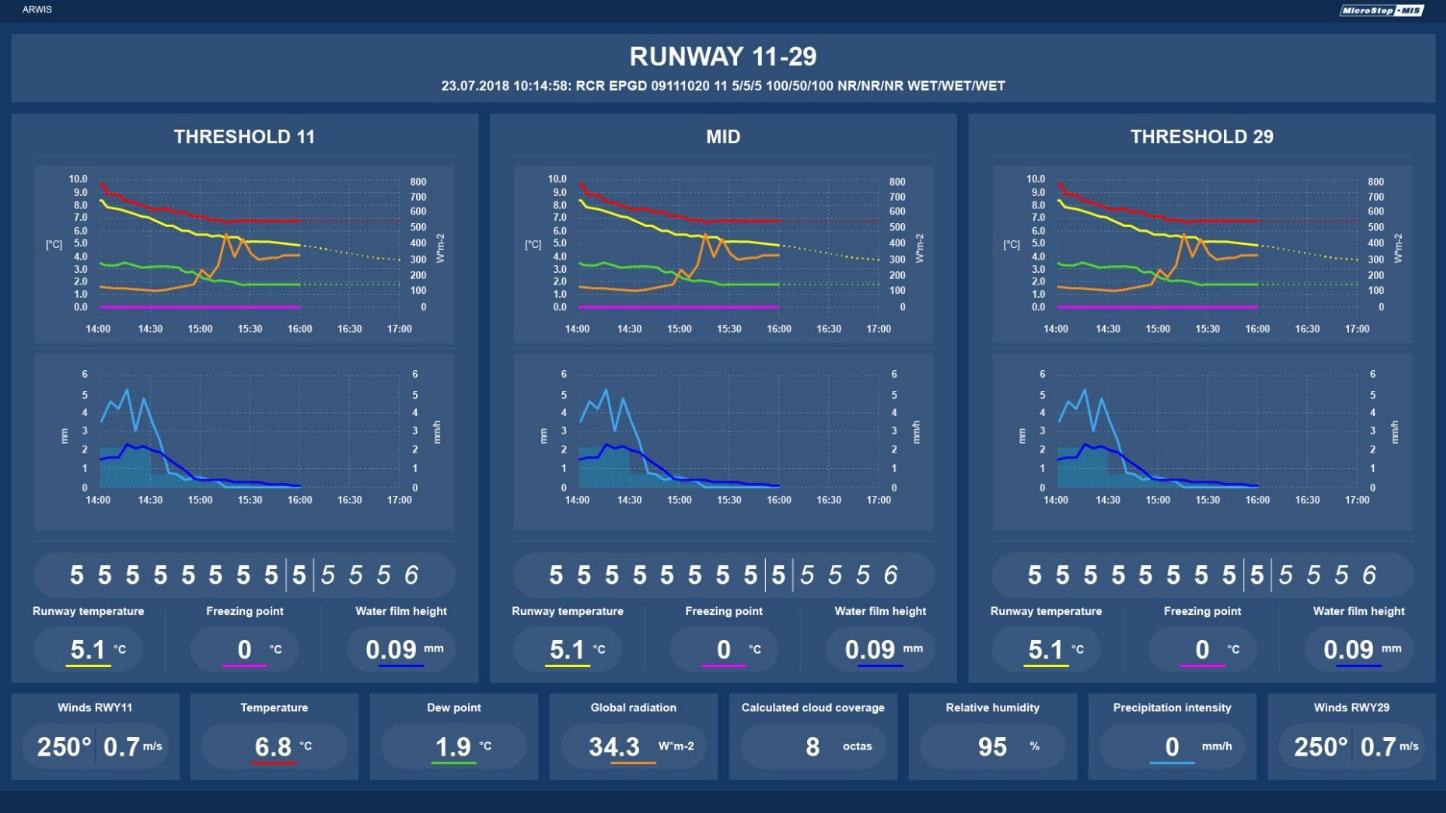
In December 2021, project members initiated a next stage of the R&D activities at Lech Wałęsa Airport in Gdańsk. All components of the platform were integrated, and first tests were performed on both simulated and live air traffic. This phase will run until April 2022 and will include Dassault performing test flights with the use their breaking action reporting systems, and Airbus providing runway condition data from its OBACS-equipped aircraft operating at Gdańsk Airport. The testing phase will be concluded with a validation exercise focusing on the assessment of the suitability of the RCAMS system in the work of air traffic controllers. For this purpose, PANSA’s tower control simulator will be used.
This system automatically generates reports on the current condition of the runway and continuously distributes them to all stakeholders involved in air traffic control and airport operations. RCAMS is also capable of producing short-term predictions of runway condition thanks to an algorithm developed by ICM UW. Data compiled by RCAMS can be corrected or supplemented with additional information by the duty officer at any time to keep it up-to-date and accurate.
Thanks to RCAMS, information about the condition of the runway is collected and distributed quicker, more easily, and more comprehensively. This will positively contribute to improving the safety of the traffic on the runway during dynamically changing weather conditions and to reducing the risk of incidents such as runway excursions during take-off or landing.
Thanks to the integration of RCAMS with aircraft on-board systems and runway sensors, safety-critical information will be better analysed and distributed. RCAMS will also be capable of automatically generating alerts based on data obtained from the OBACS of the aircraft concerned, e.g., in case that the runway condition is not good enough to safely perform take-off or landing. Tests of the RCAMS are scheduled to end in Q2 2022 and will be followed by a period of documenting the results of the studies. The project as a whole will be concluded in the first half of 2023.
All activities are carried out under SESAR 2020 project co-financed by the Horizon 2020 programme (grant agreement No 872277).
